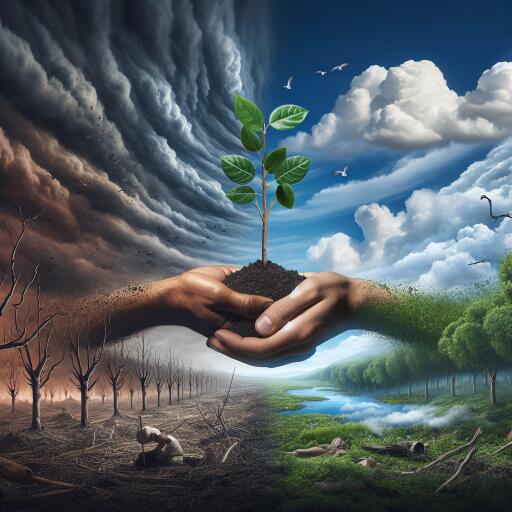
Restore Our Soil and Our Planet
Within the intricate web of life that sustains our planet, soil plays a foundational yet often underestimated role. Essential for agriculture, vital for water filtration, and crucial in regulating our climate, soil’s health is directly linked to our survival.
However, this indispensable ally is facing relentless pressure from human activities. Deforestation, excessive grazing, and aggressive farming practices have stripped the earth of its fertile topsoil, leading to widespread land degradation. This crisis extends beyond an environmental dilemma, encroaching upon our food security, water purity, and the very stability of our climate. As fertile grounds turn to dust, our capacity to grow food diminishes, water resources become contaminated, and the soil’s ability to store carbon is compromised, worsening global warming.
A report by the United Nations Convention to Combat Desertification (UNCCD) highlights a sobering fact: 40% of the planet’s soil is now degraded due to human interaction. This degradation underlines a critical threat not just to ecosystems but to human prosperity, affecting half the globe’s population and jeopardizing an equivalent of nearly half of the world’s GDP—around US$44 trillion. Moreover, the frequency and intensity of droughts have surged by 29% since the turn of the millennium, signaling a future where over three-quarters of humanity could grapple with water scarcity by 2050.
This relentless exploitation reflects humanity’s oversized ecological footprint, precipitating a vicious cycle of desertification, deforestation, and erosion. Our insatiable demand outpaces the Earth’s regenerative capabilities, pushing precious ecosystems beyond recovery. Soil degradation, as outlined by the Intergovernmental Science-Policy Platform on Biodiversity and Ecosystem Services (IPBES), directly impacts biodiversity and diminishes vital ecosystem services across terrestrial and aquatic realms.
In India, the rhythm of agricultural life hinges on the capricious monsoon rains, which are becoming increasingly erratic due to climate change. The challenge is compounded by accelerated desertification, spurred by enhanced agricultural demands, urban expansion, and rising incidences of extreme weather. These dynamics have stark implications for food production, public health, and lead to dire outcomes like dwindling water sources and forced migration.
Yet, within this crisis lies the seed of opportunity. By embracing sustainable soil management practices, we can forge a path toward resilience and regeneration. The UN Decade on Ecosystem Restoration (2021-2030) champions soil restoration as a pivotal strategy to mend our broken landscapes. Revitalizing just a portion of degraded soil can avert biodiversity loss and significantly sequester atmospheric carbon, offsetting a considerable fraction of global emissions.
The ripple effects of such endeavors could be profound, offering a viable avenue to mitigate climate change and possibly keeping global warming below the critical 2°C threshold by 2030. This transcends environmental restoration; it’s about securing a livable future for all species, including ours.
As we stand at this crossroads, the choice is clear. Investing in soil restoration is not merely an ecological imperative but a necessity for our survival. It’s time to mobilize collective action, to pivot from exploitation to stewardship, and ensure that our legacy is one of rejuvenation rather than ruin. Together, let’s rise to the challenge and transform our planet—one handful of soil at a time.





Leave a Reply